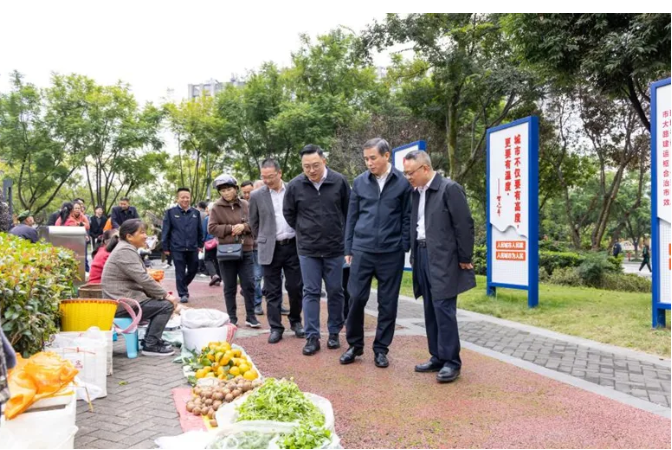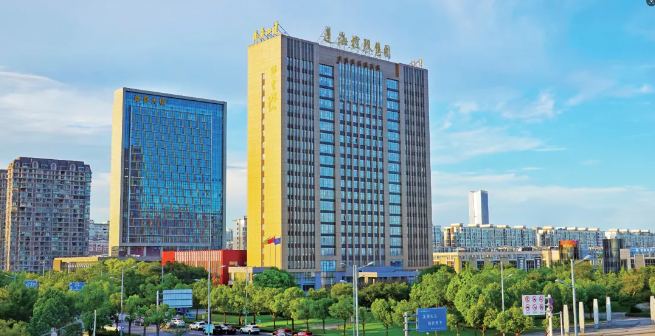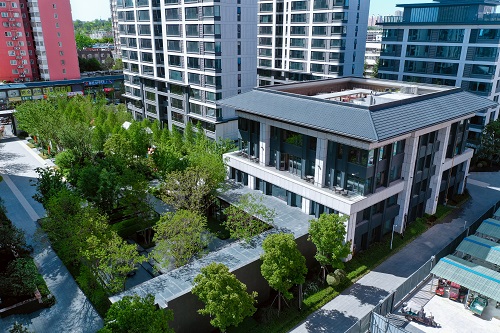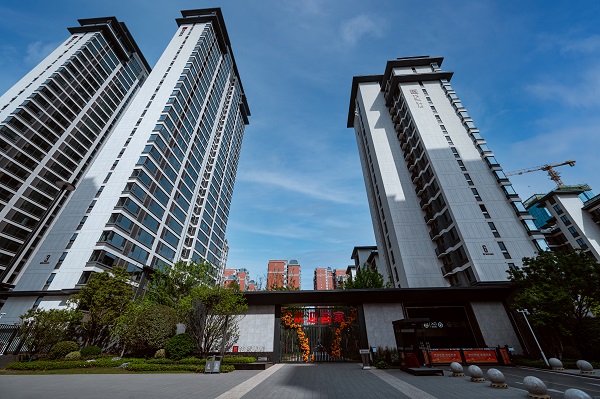1
历时25年,泰晤士河畔再开发
25 Years of Redevelopment on the Thames
历经二十五年的开发建设,位于伦敦泰晤士河畔的切尔西滨水区更新改造项目终于即将落成。这片区域占地4.58公顷,位于横跨切尔西湾的两个市镇,其滨水岸线对公众已关闭了一个多世纪。
After more than 25 years of development, the redevelopment of Chelsea Waterfront on the Thames River in London is finally nearing completion. This 4.58-ha site sits between two boroughs straddling Chelsea Creek, closed to the public for well over a century.
工业遗产发电站激发工业用地再开发 ©Farrells
The industrial land redevelopment inspired by the heritage power station
切尔西滨水,一个新的都市区
A new urban quarter at Chelsea waterfront
位于伦敦最令人向往的住宅区之一, 切尔西滨水区由Farrells的创始人特里·法雷尔爵士(Sir Terry Farrell)担纲设计,项目包括两幢37层和25层的玻璃幕墙住宅塔楼、三座环抱庭园景致的河畔住宅及由历史地标Lots Road发电站活化改建而成的住宅。此滨水开发项目亦设有商店、餐厅、酒吧和住户专用的健身会所,并将提供600米的滨水岸线向公众开放。
Situated at one of London's most desirable residential addresses, and master planned by world renowned architect Sir Terry Farrell of Farrells, Chelsea Waterfront will include two glass residential towers of 37 and 25 storeys, three riverside buildings arranged around landscaped gardens and the redevelopment of the historic Lots Road Power Station. The development will also include shops, restaurants and bars together with a residents' health and fitness club. 600m of waterfront landscape zone will be open to public too.
地点瞩目的混合功能工业用地再开发 ©Farrells
Mixed-use redevelopment of industrial land in a prominent riverside site
重塑泰晤士河天际线
Shaping the New Thames Silhouette
对于 Terry Farrell 爵士来说,这个项目充分体现了伦敦城市发展的有机本质。“将高度、密度、家庭和单身人士、商店、文化设施充分混合,伦敦正在以这样一种真实的方式进行自我再生”,他说。
This, for Sir Terry Farrell, epitomises the organic nature of London’s growth. “That mixture of heights, densities, families and single people, with shops, cultural organisations. What I find extraordinary is that London regenerates itself in a way that is true to itself.” he says.
2
伦敦的工业区再开发
Redevelopment of Industrial Land in London
在伦敦这样充满活力的都市,寻求城市未来可持续的生长空间迫在眉睫。过去几十年来,伦敦一直在探索其在后工业时代下新的城市生长模式,以适应未来住房、办公场所、休闲和服务设施的增长需求。工业用地的混合再开发,一直是解决如伦敦这类后工业城市问题的好办法。因此探索工业用地混合再开发的原则与方法,始终是英国城市规划的重要议题。
In dynamic cities such as London, urban growth is imminent. London has been for decades exploring its new pattern to adapt the future growth of housing, workplaces, leisure and services. The mixed use redevelopment of previous industrial land, has long been put forward as a good solution to the problem of post-industrial cities as London. The exploration of its principle and approaches has been therefore the topic for town planning in UK.
泰晤士河沿岸三大发电站 ©Farrells
The three great power stations on the River Thames
发电站场地是更大范围社区渗透性的核心 ©Farrells
Power station site as the key to permeability in the wider neighbourhood
历史上,发电站即是工业区的中心与城市标志物
In history the power station itself was the center of the industrial area and an urban landmark
原工业棕地,总体规划力图实现渗透性,改造后的发电站仍将成为地标 ©Andrew Holt
Previously an industrial brownfield site, the masterplan intends to create permeability and the transformed power station will still be a landmark.
以住房为主导的更新方式
A Housing-Led Approach to Regeneration
过去的一种理念是,工业地块的再开发必须在本地区内维持相当的产业就业指标,也即必须维持一部分产业用地,使产业和生活在小范围内平衡共生。而现在,英国的地方规划局开始松动了这项管制方针——在高速发展地区提供更多的住房来吸引高技术劳动者,以支持整个伦敦城经济的持续增长;在新的理念下,住房供应已被纳入到政府实现经济增长的一揽子计划内。因此工业地块的再开发策略转向“以住房为主导”,释放出工业用地成为实现住房目标的关键。
Employment was previously understood to be one of the fundamental indices during the redevelopment of industrial land, that is, a portion of industrial land must be maintained locally to achieve the coexistence of work and life. However, local planning authorities in the UK are now operating in a political climate that is moving towards deregulation — there has been a shift towards a housing-led approach to regeneration, whereby the release of industrial sites is key to delivering housing targets. Housing is now seen as part of the package of support for economic growth, required to attract skilled workers in high-growth sectors, which supports an economic growth agenda at a London scale, rather than a local one.
为工业场地引入高品质的居住
Bringing high-quality residential towers to industrial land
3
Masterplanning
在响应英国政府工业用地再开发的大背景下,Farrells 成功塑造了切尔西滨水区棕地更新的世界级典范。这一城市更新的标杆项目展示了Farrells如何以城市规划与高品质的设计充分利用有限的土地资源。
Responding to the UK government’s agenda on regeneration of industrial land, Farrells delivers the world class design on an important brownfield site along Chelsea Waterfront. The re-development is a benchmark scheme illustrating how urban planning and high quality design can make the best of limited land resource.
改造后渗透的街道与公共空间串联起多元功能 ©Farrells
The permeable streets and public space connect the mixed-use development
以欢迎的姿态打开滨河景观 ©Farrells
A welcoming gesture open up to waterfront
项目为切尔西滨水区新增了超过800户住宅,除私有住宅外,有约40%的住宅将作为经济型住房或租金低于市场价,以此来鼓励低收入家庭以及超级富豪们共同入住这样一个面向所有人的混合社区。
It will soon hold over 800 new homes, apart from private apartments, of more than 40 percent affordable housing or rental lower than market rates, encouraging both low-incomes and mega-rich to move in this neighbourhood for all.
一个混合的社区 ©Farrells
A neighbourhood for all
为伦敦打造滨河“都市村落”
A New Urban Village for London
纵观伦敦整个城市脉络,Lots Road 发电站位于泰晤士河一处宽阔弯曲处的岸边,位置十分瞩目,是城市景观线上的焦点,自身也具有极其优越宽阔的视野。
In a London-wide context, Lots Road Power Station occupies a prominent riverside site, on a wide bend in the River Thames, with long range views along the river both into and out of the site.
唯一滨河的伦敦“都市村落” ©Farrells
The one and only urban village by the riverside
Farrells 的总体规划理念是在此打造一个新的“都市村落”,将切尔西湾一侧的Lots Road 社区与另一侧的切尔西港和帝国码头互相连接起来。为了更好地支撑社区内的居住人口,每个“都市村落”具备独立的次中心,并且设有复合型的商业设施、公共交通连接、社区配套设施;这些社区配套网络将连接至周边更大范围的Lots Road社区以及切尔西港和帝国码头,整体建成一个繁荣的滨水都市村落。
Farrells’ masterplanning principle is to create a new ‘village’ connecting the Lots Road neighbourhood on one side of Chelsea creek and with the Chelsea Harbour and Imperial Wharf on the other. To successfully support their residential populations, each of these ‘villages’ possesses its own distinct center and balance of commercial uses, public transport links, community facilities to the connection of the wider Lots Road neighborhood with Chelsea Harbour and Imperial Wharf to establish a thriving riverside urban village.
新的塔楼将蓬特威特罗、世界尽头和切尔西港开发项目与发电站的烟囱和谐地组合在一起 ©Farrells
The new towers draw the Montevetro, World's End and Chelsea Harbour developments into a harmonious composition with the power station chimneys.
双塔处于河畔城市肌理中的艺术表达 ©Farrells
Artist’s impression of the two towers in their river context
实体、社交和视线的多重渗透
Physical, Social and Visual Permeability
发电站场地是更大范围社区渗透性的核心 ©Farrells
Power station site as the key to permeability in the wider neighbourhood
Farrells 的设计目标是通过实体、活动和视线的多重渗透,来整合这片支离破碎但处于重要战略位置的场地。将场地打通开放、提升步行可达性的需求,是Farrells对Lots Road设计提案的核心出发点,而提升整体性和渗透性的原则贯彻了整个规划与开发过程。该项目充分利用受限的土地资源,在废弃、割裂的场地上,创建了一个充满活力的都市村落。
Farrells’ objective is to unify a strategically located but fractured part of London with physical, social and visual permeability. The need to open up the site and establishing pedestrian links to the surrounding neighbourhoods has fundamentally informed Farrells’ proposals for Lots Road and the key driver has been our drive to enhance integration and permeability across the development. This project makes the best of limited land resource and a constrained site to create a vibrant new neighbourhood on a derelict site.
实体、社交和视线的多重渗透 ©Farrells
Physical, Social and Visual Permeability
多样的开放空间 Various open spaces
更多Lots Road发电厂改造与豪华居住塔楼的建筑设计,敬请期待……
More to come soon on the architecture design of the Lots Road power station renovation and luxury residential towers…





发表评论 取消回复